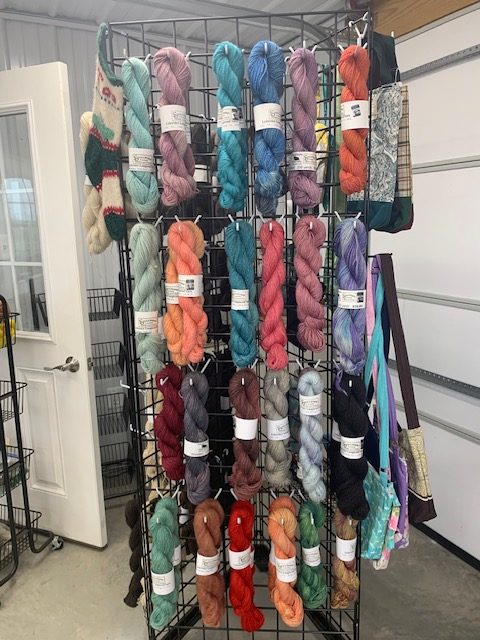February is a month to wrap up a lot of our production in anticipation of spring and starting a new cycle all over again. During this month we will finish processing our lambs and steers for the year, begin preparations for the spring maple syrup flow and lambing, and get fleeces out to be processed.
If you see white buckets hanging on trees it is a good thing. Tom will soon be putting the taps in the maple trees to collect syrup. Once it gets into the forties during the day but is still below freezing at night the sap will start to run. (You may also notice the sheep and ponies nibbling on the bark as the sap starts to flow). There can be significant differences in flow even on the same tree depending on whether it is the north or south side, over a large root or under a big branch. The sap flow will turn off when the tree’s internal temperature reaches 45 degrees.
We will be prepping wool to go to Batttenkill Fibers in New York to be made into more handwoven blankets and throws. This is a lengthy process with a lot of hand work as the fleece first has to be spun into yarn. If you have not done any hand spinning you may not realize the many steps involved in turning raw fleeces into yarn. First the fleece must be skirted which involves removing undesirable wool, any burrs, straw, manure, etc. We do this on the farm (and would be glad to show anyone who may be interested). Then the fleeces must be washed to remove dirt and excess lanolin. Next, they are carded on big toothed drums which opens up the fiber and separates any clumps. Pin drafting or combing then straightens the fibers and aligns them parallel to each other so they can then be spun. First, they are spun into “singles” or one strand. While singles yarn can be used directly most fiber artists prefer to work with plied yarn. This involves twisting 2 or more strands of single ply together producing a more balanced and stronger yarn. For the blankets this processed yarn is then sent to local cottage weavers who will hand weave the blankets. We are having all our wool processed as natural color. Any dyeing we will do here on the farm.
We will also be getting a yarn order back from Blue Mountain Fiber by the end of the month. They are a spinning mill in Harrisburg, PA that we use to spin yarn. Once that arrives it will be time to start some more dyeing projects.
Preparation of the hides to be tanned is also critical to ending up with a quality product. They must be collected promptly from the butcher and then hand trimmed and salted for several weeks to dry them out. We then take them to Bucks County Furs in Pa for tanning.
Meanwhile the rest of the sheep are mostly just hanging out. We may not like 9 degrees but they far prefer it to 90 degrees! We also are carefully watching hay consumption. Due to the drought this year our production was way down, and we have already had to cut off our regular hay customers to preserve enough for our own stock. We have also started planning for our lambing prep – primarily at this point making sure we get an early March shearing date. (More on lamb prep next month!)

